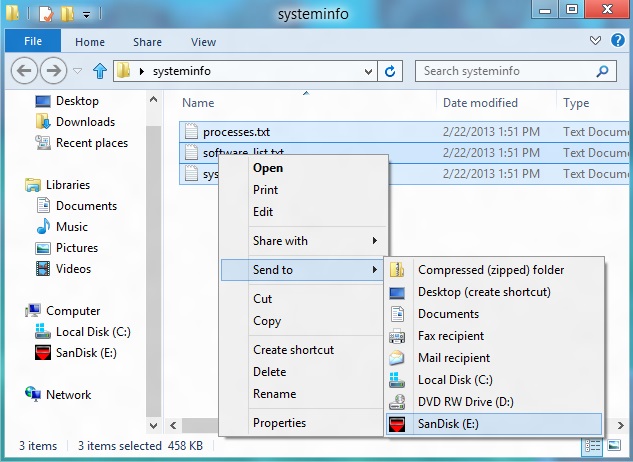a. Plug your USB flash drive into your computer's port. Launch iTunes on your computer
b. Go to the 'Edit' menu within iTunes and click on 'Preferences.'
c. Click on the 'Advanced' tab to see where exactly your iTunes library is stored. It will be an XML file.
d. Open your library by going to the 'Start' menu, selecting 'computer,' clicking on the appropriate drive and browsing to the location of the file.
e. Open a second window in 'computer' and click on the icon for your flash drive. Drag and drop your library to the drive. This could take a long
time, depending on the size of your library.


Flash drives are chips of memory you can use to store music, pictures and other data. The memory retains what you copy to it even when there's no power connected. Flash drives are a faster alternative to mechanical disk drives, however they typically come in smaller sizes because they are more expensive than mechanical drives. Flash drives are also very portable and make a great medium to transfer files among computers or devices.
To use a flash drive, locate a free USB port, insert the drive into the port and wait for Windows to recognize it. After you insert the flash drive, the computer assigns a drive letter to it, such as 'E.' When you download files and you're prompted for the location to put the downloaded files, select the drive letter assigned by the computer to save them to the flash drive.
Take your downloads with you on a flash drive to listen to downloaded music at a friend's house or read downloaded research with a study partner. Expose the USB connector on the flash drive if.
Format a Flash Drive
You might have to format a brand new flash drive before you can use it. If Windows prompts you to format the disk, choose Format Disk and then choose Start.
Select OK to begin the formatting and choose OK when it completes.

Open the File Explorer and view the flash drive and drive letter assigned by Windows.
Download to a Flash Drive
Navigate to the website with the data files you want to download, such as Amazon.com's free MP3 downloads. Choose a song to download to your computer and complete any other tasks such as logging in to the site.
When Windows prompts you for the location to save your download file, scroll the list of locations to find the flash drive and select it. Then choose Save to save the downloaded file to the flash drive.
Eject a Flash Drive
When you've finished downloading files to your flash drive, choose the Notifications icon on the System Tray and select Safely Remove Hardware and Eject Media.
Select your flash drive and wait for Windows to tell you that it has ejected safely before you remove the drive from the USB port.
Comments are closed.